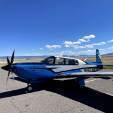Broken TKS lines, sharing the information
-
Members Online
- Jim Peace
- Bartman
- Rick Junkin
- DonMuncy
- Hank
- buddy
- eman1200
- ta2too
- DXB
- acekng1
- Skyland
- PeterRus
- Wildhorsetrail
- ChuckSchneider
- 231DF
- sandeepdutta
- varlajo
- donkaye, MCFI
- wombat
- hammdo
- Geoff
- kaba
- 47U
- 1967 427
- Ethan
- N201MKTurbo
- Old Chub
- highflyer77
- Ron McBride
- MarquezJC
- outermarker
- Peter T
- hypertech
- Obsession2
- Ascend MX
- stevesm20b
- Hradec


Recommended Posts
Join the conversation
You can post now and register later. If you have an account, sign in now to post with your account.